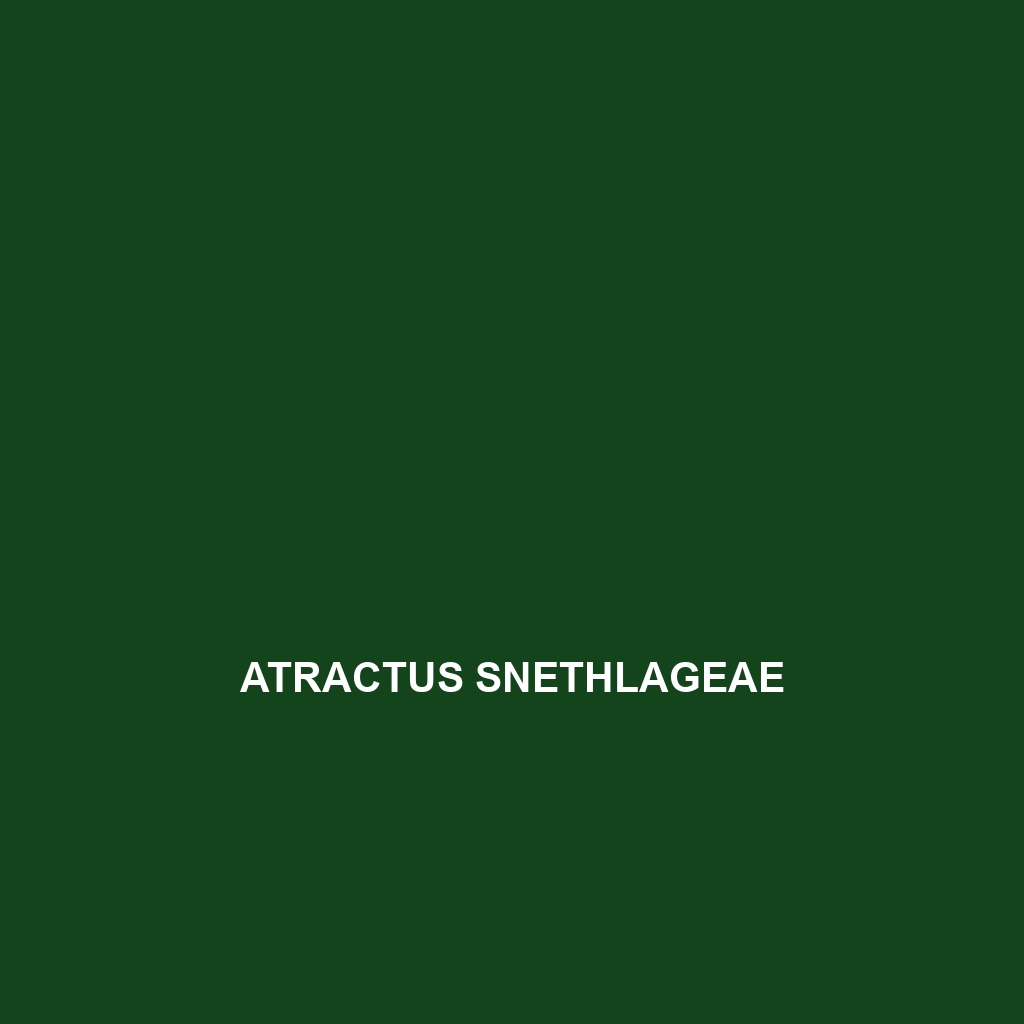Atractus snethlageae – Species Description
Common Name: Atractus snethlageae
Scientific Name: Atractus snethlageae
Habitat
Atractus snethlageae is primarily found in the humid montane forests of the Andes Mountains, specifically in sections of Colombia and Ecuador. This snake species thrives in moist, dense vegetation, particularly in areas with abundant leaf litter and undergrowth. The elevation range for this species typically falls between 1,200 to 2,500 meters above sea level, where the climate is cool and humid.
Physical Characteristics
Atractus snethlageae is a slender, small-sized snake, generally reaching lengths of 30 to 50 centimeters. Its coloration plays a vital role in its camouflage, with a dorsal surface exhibiting dark brown to black patterns, complemented by lighter cream or yellowish lateral scales. The body shape is elongated, with a slightly flattened head that aids in burrowing through leaf litter. The distinctive color pattern and small size make Atractus snethlageae a unique species among the Atractus genus.
Behavior
This species is primarily terrestrial and exhibits secretive behavior, often hiding under debris or within the leaf litter. Atractus snethlageae is mostly diurnal, actively foraging during the day. It is known for its cautious movements and is rarely seen outside its natural habitat. Observations indicate that it may exhibit defensive behaviors such as coiling or becoming relatively still when threatened.
Diet
Atractus snethlageae predominantly feeds on small invertebrates, including earthworms, slugs, and various species of insects. Its diet highlights its role as a predator within its ecosystem, helping to control the populations of these smaller organisms. Its feeding habits are largely influenced by the availability of prey in its forest habitat.
Reproduction
Reproductive activities for Atractus snethlageae typically occur during the wet season, coinciding with warmer temperatures and higher humidity. Females lay eggs, with clutch sizes varying based on environmental conditions. The incubation period, which lasts approximately 60 to 80 days, results in the emergence of small, fully formed juveniles, equipped for survival in their woodland environment. Parental care is absent post-hatching, as the offspring are independent from birth.
Conservation Status
The current conservation status of Atractus snethlageae is categorized as *Vulnerable* due to habitat loss from deforestation and agricultural expansion. Efforts to protect its natural habitat are crucial for ensuring the survival of this species. Conservation actions are needed to safeguard the forest environments that support its life cycle.
Interesting Facts
Atractus snethlageae is notable for its striking pattern, which varies significantly among populations, making it a subject of interest for herpetologists. This snake is also part of ongoing research that studies the effects of climate change on high-altitude fauna within the Andes.
Role in Ecosystem
As a predator of invertebrates, Atractus snethlageae plays a crucial role in maintaining the balance within its ecosystem. By controlling the populations of its prey, it contributes to the overall health of the forest floor. Additionally, as prey for larger reptiles and birds, it is an integral component of the food web in the Andean montane forests.
